
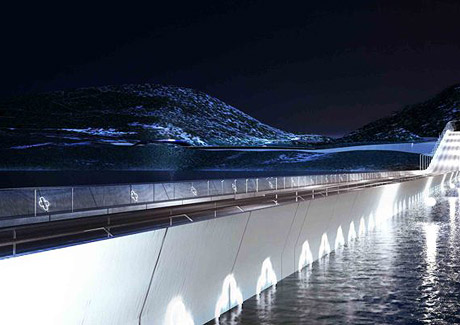
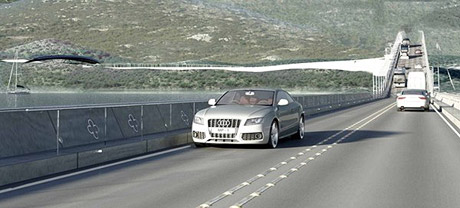
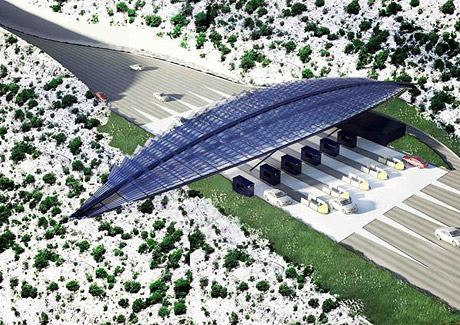

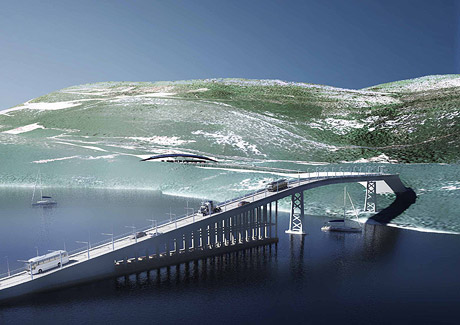
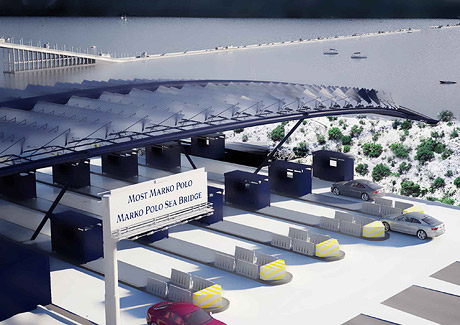
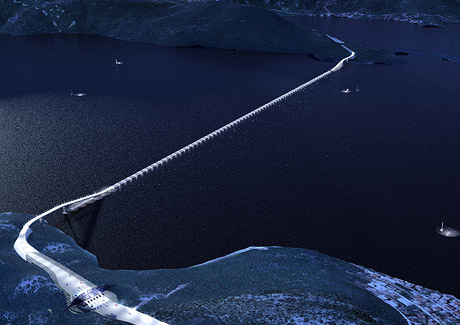
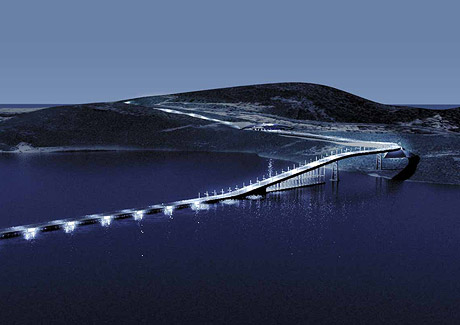
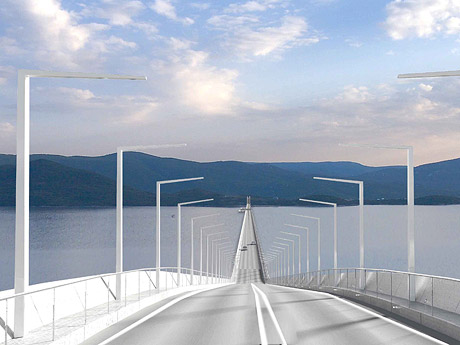
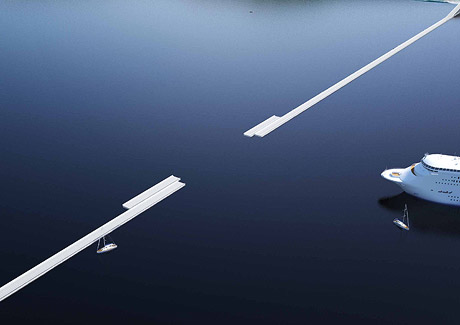
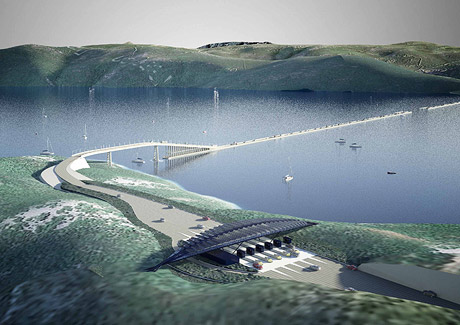

Executive summary:
Floating bridge proposal to fulfill Croatia's requirement of territorial cohesion prior to EU accession in a manner that adheres to the vision, mission and goals of the Dubrovnik-Neretva Zupanija, Hrvatske Ceste and the Croatian Ministry of the Sea, Transport and Infrastructure.
Floating bridges provide safe, cost-effective, environmentally-friendly and permanent solutions to transportation challenges on every continent (except Antarctica). Notable examples are in Norway (longest floating bridge in Europe) and the United States of America (longest floating bridge in the world). More than 115.000 vehicles of all types cross the American bridge each day, which represents a daily vehicle volume equal to the entire population of the Dubrovnik-Neretva County.
Our proposed floating bridge would incorporate technology and know-how from Finland and Sweden, but all components would be manufactured in Croatia. Our proposed bridge would be the longest in Europe, but the journey across would last only 3 minutes. The bridge's daily capacity of 42.000 vehicles is nearly 3x greater than the current peak seasonal traffic volume at the HR-BiH border in question, so no additional construction will be needed to handle large volume increases. The average toll for one vehicle and one person would be EUR 5,00 plus tax and there are no technical restrictions to weight, size or type of vehicle. All cargo and passenger vehicles may move freely across the bridge. The construction and operation of our bridge proposal would have no negative environmental impact because it is a closed system in which no waste reaches the water and no sea bed digging is needed. Our bridge can be constructed for EUR 36 million and completed by June 2013. Given correct operating concession terms, our proposal could be completely funded by private investors at no cost to Croatia or the European Union.
Bridge construction will create at least 100 new jobs until completion and provide €9 million in PDV over the next 10 months. Bridge operations will require at least 20 fulltime employees earning an average net wage of €1622 per month and will provide the Government with approximately €2 million annually in PDV generated from toll fares.
Design of the bridge provides a clear overview of the technology, beauty and value of our floating bridge proposal. This proposal meets and exceeds the requirements of Croatia's EU accession and the goals of the Dubrovnik-Neretva County.
SOLUTION WITHOUT COMPROMISE:
- Croatia maintains complete sovereignty over its territory for first time in 314 years
- BiH has no legal right to obstruct construction since continuous open access to sea is assured
- No additional real estate required, thus no one can profit from speculation or delay project
- Bridge capacity exceeds traffic demand for 50 years (42,000 vehicles daily capacity)
- Preserves water quality in important aquaculture zone
- Integrates subtle design motives from the whole County’s culture and history
- All electricity required for operations shall be produced by solar panels on the roof of the toll both plaza
CONSTRUCTION PLAN:
- Individual pontoons are built on dry land next to a waterway
- Then they are floated and towed like barges to the site
- Pieced together like “legos” starting at the edge toward the center
- Pontoons are held in place by enormous steel cables connected to heavy concrete anchors on the seabed
- Once in place, then the roadway material and other items are added on to the pontoon surface
- Pontoons are water-tight concrete that does not erode over time and require no maintenance
- The weight of the water displaced by the pontoons is equal to the weight of the structure (including all traffic), which allows the bridge to float safely
SOCIO-ECONOMIC DEVELOPMENT VALUE:
- + 100 new jobs created during construction and 20 full-time for operations (average monthly net wage: €1.622)
- + Government VAT earnings from the bridge will be € 9 million in VAT in next 10 months from construction and nearly € 2 million per year from toll fees.
- + Added values from connecting Neretva and Pelješca regions
- + Significant decrease in costs: transportation, distribution, cost of living, etc
- + Cost decreases help Croatian tourism offer competitive in Mediterranean
- ± Negligible increase in real estate values for Peljesac, Dubrovnik or Korcula
Authors: James Price Chuck and Maja Brucic
